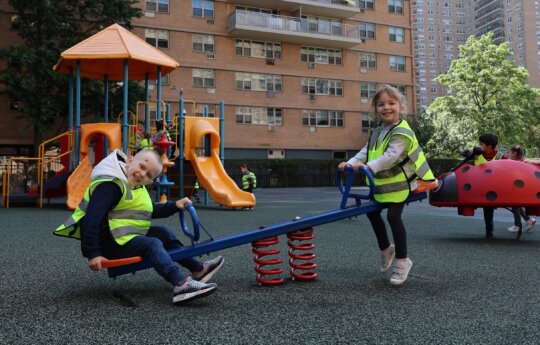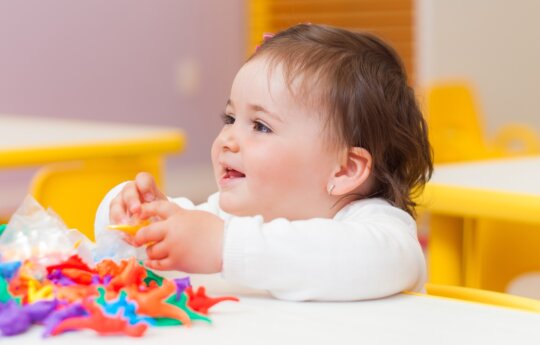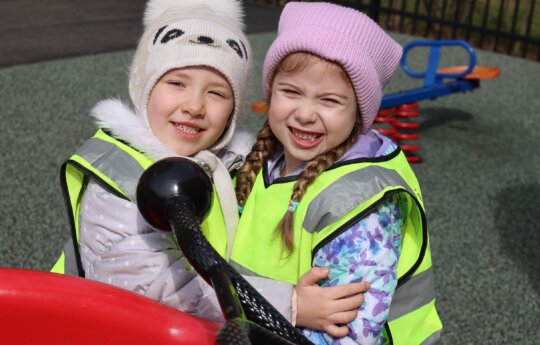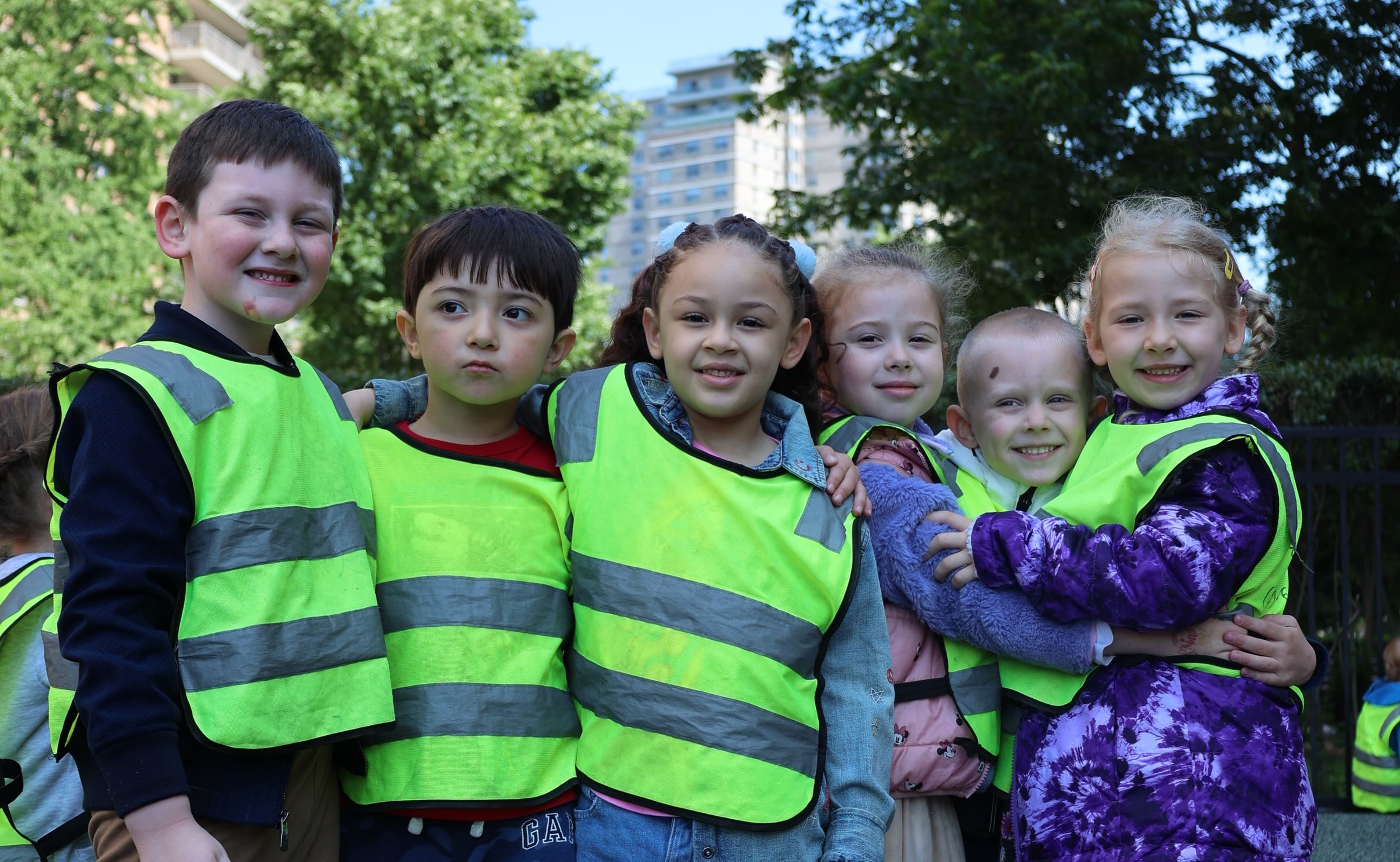
As the spring equinox heralds the arrival of warmer days and blooming landscapes, it’s a perfect time to immerse children in the rejuvenating energy of the season. The spring equinox, marking the moment when day and night are of equal length, symbolizes balance and renewal, making it an ideal occasion to introduce kids to the wonders of nature and the joy of learning through play.
Engaging children in spring activities, from outdoor adventures to educational STEM projects, not only aligns with the themes of growth and new beginnings but also enhances their physical, cognitive, and emotional development. This guide will explore a variety of spring activities for kids, including fun outdoor activities, spring STEM projects, crafts, and books that celebrate the essence of spring, ensuring that this season is full of exploration and wonder for the young ones!
Spring Activities for Kids: An Overview
The benefits of outdoor and educational activities in spring are manifold, impacting children’s development in positive ways.
- Firstly, outdoor activities in the warmer spring weather encourage physical exercise, which is crucial for building strong bones, improving cardiovascular health, and enhancing motor skills. Activities like hiking, biking, or even structured sports introduce kids to the importance of regular physical activity in a fun, engaging environment.
- Educationally, spring offers a unique opportunity for experiential learning. For instance, spring STEM activities for kids can include exploring plant life cycles, observing insect behavior, or conducting simple outdoor experiments that demonstrate scientific concepts in real-world settings. This hands-on approach to learning can enhance understanding and retention of complex subjects.
- Moreover, springtime activities can contribute to emotional and social development. Participating in group activities, whether they are educational projects or outdoor sports, helps children develop teamwork skills, communication, and empathy as they interact with peers and nature.
- Engaging in spring activities also fosters a connection with the environment. Children learn to appreciate the natural world, understand the importance of seasons, and develop a sense of responsibility towards nature conservation. This environmental awareness is a critical aspect of holistic education and personal development.
- Lastly, the variety of spring activities allows for the cultivation of creativity and curiosity. Whether through spring crafts, interactive educational tasks, or simply exploring the great outdoors, children are encouraged to think creatively, ask questions, and explore the world around them, laying the foundation for lifelong learning and a love for discovery.
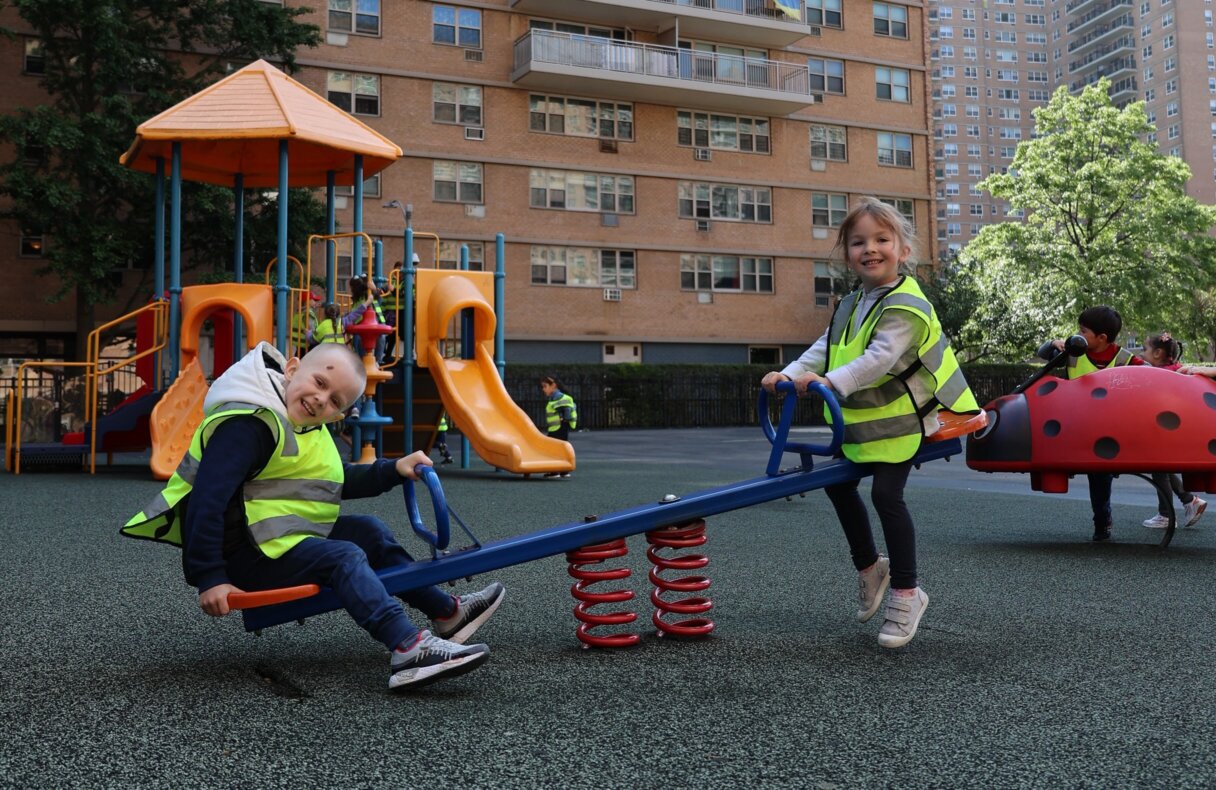
Outdoor Fun: Spring Activities for Kids
For preschoolers, outdoor spring activities should be simple, engaging, and sensory-focused to stimulate learning and development. Here’s a special section dedicated to spring activities suitable for young children.
List of fun spring outdoor activities
- Nature walks and scavenger hunts: Encourage children to explore the environment, identifying various elements of nature and collecting interesting finds, enhancing their observational skills.
- Planting a spring garden: Involve kids in gardening, teaching them about plant growth and environmental care, and providing a sense of achievement as they watch their plants flourish.
- Outdoor spring-themed games and sports: Facilitate activities like frisbee, soccer, or relay races with a spring theme, promoting physical fitness and teamwork.
- Bird watching and making feeders: Teach kids about different bird species and their habitats, and create simple feeders to attract them, fostering an interest in wildlife and conservation.
- Picnicking and outdoor storytelling: Combine a leisurely picnic with storytelling or reading sessions in a park, encouraging relaxation and literacy in a natural setting.
- Kite Flying: Take advantage of spring breezes to fly kites, teaching kids about wind and weather, while improving their coordination and observation skills.
- Biking or Rollerblading: Use warmer weather to encourage cycling or rollerblading in safe, scenic areas, promoting physical fitness and outdoor exploration.
- Fishing or Pond Dipping: Experience fishing or explore pond life, teaching children about aquatic ecosystems and the animals living in them.
- Outdoor Art Projects: Use natural materials or set up an outdoor painting session, allowing kids to express creativity while enjoying the fresh air.
- Camping or Backyard Camping: Plan a camping trip or set up a tent in the backyard, giving kids a taste of adventure and a night under the stars, complete with storytelling and marshmallow roasting.
Outdoor spring-themed games and sports
- Flower Tag: Adapt the classic game of tag by designating one player as the “gardener” who tries to tag others, turning them into blooming flowers when caught.
- Butterfly Catch: Use colorful, lightweight fabric or paper to create butterfly shapes and have children try to catch them with handmade nets, promoting physical activity and hand-eye coordination.
- Spring Obstacle Course: Set up an obstacle course with stations that mimic spring activities, like hopping like bunnies, crawling through “tunnels” of greenery, and balancing eggs on spoons.
- Rainbow Relay Race: Organize a relay race where teams complete tasks related to the colors of the rainbow, such as finding objects of specific colors or navigating through colored zones.
- Gardeners and Worms: A playful game where “gardeners” try to catch “worms” as they crawl through designated areas, teaching about garden ecosystems in a fun way.
- Seed Spitting Contest: Use sunflower seeds or similar safe options for a seed spitting contest, measuring distances to combine fun with lessons in aerodynamics and plant growth.
- Nature Bingo: Create bingo cards with pictures or names of common spring items like flowers, insects, and birds, encouraging kids to observe and find these items outdoors.
- Water Balloon Toss: Fill water balloons and have children toss them back and forth, gradually stepping further apart, perfect for a warm spring day.
- Sack Race with a Spring Twist: Have sack races where participants hop like rabbits or kangaroos, adding a fun spring element to this traditional game.
- Spring-Themed Simon Says: Play “Simon Says” with actions related to spring, such as “Simon says, act like a rain cloud” or “Simon says, grow like a flower,” encouraging imaginative play and physical activity.

Stimulating Minds: Spring STEM Activities for Kids
STEM stands for Science, Technology, Engineering, and Mathematics. It is an educational approach that integrates these four disciplines into a cohesive learning paradigm based on real-world applications. STEM is crucial for several reasons:
- Innovation and Economic Growth: STEM drives innovation and technological advancements, which are key to economic growth and competitiveness in the global market. Countries with strong STEM education programs tend to have more robust economies.
- Problem-Solving Skills: STEM education fosters critical thinking, creativity, and problem-solving skills. By engaging in hands-on projects, students learn to analyze situations, ask questions, and devise solutions to complex problems.
- Adaptability to Future Job Markets: Many of the fastest-growing careers are in STEM fields. Educating students in STEM subjects prepares them for jobs that are in high demand, many of which may not even exist yet, ensuring they are adaptable to the evolving job market.
- Scientific Literacy and Informed Decision-Making: In an era of rapid technological and scientific advancements, having a population with a strong foundation in STEM is essential for making informed decisions about health, environment, and technology.
- Encourages Innovation and Critical Thinking: STEM education encourages innovative thinking and critical analysis, essential skills for addressing the complex challenges of today’s world, such as climate change, renewable energy, and healthcare.
- Global Perspective and Collaboration: STEM education often involves collaborative projects that can connect students from various parts of the world, fostering a global perspective and the ability to work effectively in diverse teams.
In summary, STEM education is important not just for individual career success, but also for the broader societal benefits of driving innovation, economic growth, and solving complex global challenges.
Examples of spring STEM activities for preschoolers
Spring STEM activities for preschoolers can be both educational and fun, capturing their natural curiosity about the world around them. Here are some examples:
- Growing Plants from Seeds: Teach children about the life cycle of plants by having them plant seeds in clear containers so they can observe the germination process and the growth of roots and stems.
- Water Cycle Experiment: Create a simple demonstration of the water cycle using a plastic bag, water, and sunlight. Children can see how water evaporates, condenses, and precipitates, mimicking nature’s process.
- Shadow Tracking: Use the spring sun to explore shadows. Mark the shadow of an object or a playground structure at different times of the day to show how shadows change with the sun’s position, teaching basic concepts of solar energy and time.
- Nature Observation Journals: Encourage children to keep a journal of the different types of plants, insects, and animals they observe in the spring. This activity integrates science with literacy skills and helps develop observational abilities.
- Simple Machines in the Playground: Use playground equipment to teach about simple machines. For example, see-saws can illustrate levers, slides can demonstrate inclined planes, and swings can show pendulums.
- Butterfly Life Cycle: Teach about the life cycle of butterflies by observing caterpillars transform into butterflies, discussing each stage of their life cycle and the concept of metamorphosis.
- Weather Charting: Keep track of the daily weather with a simple chart or graph, teaching basic data collection and pattern recognition. Children can learn about different types of weather and start to understand seasonal changes.
- Building Bird Nests: Have children try to construct their own bird nests using twigs, grass, and other natural materials they find outside. This activity teaches about animal behavior and habitats.
- Exploring Soil Samples: Collect different types of soil from around the schoolyard or park and observe the textures, colors, and components. Discuss how soil supports plant life and the different types found in various environments.
- Magnifying Glass Exploration: Give children magnifying glasses to explore the details of leaves, flowers, insects, and other small objects found in nature, fostering a sense of wonder and scientific inquiry.
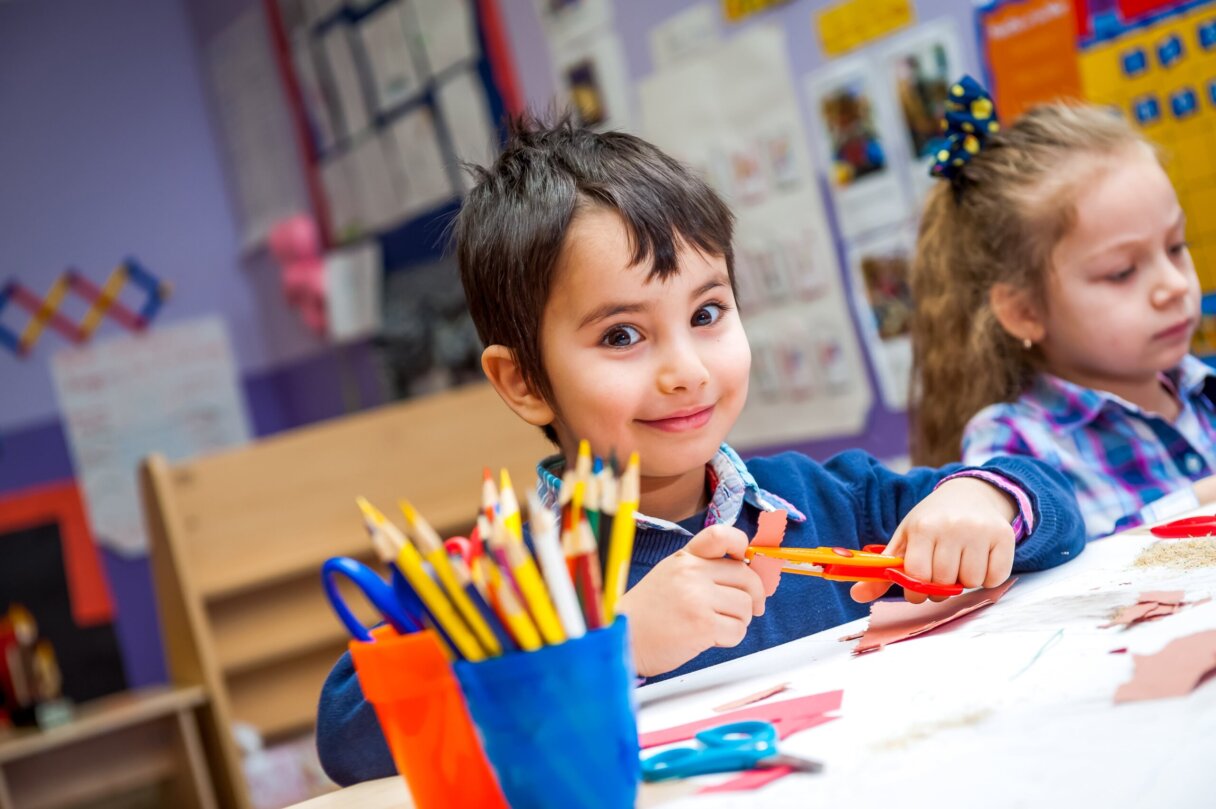
Getting Crafty: Spring Crafts to Do with Kids
Crafting in spring with children merges the educational and therapeutic benefits of creative activities with the season’s natural inspirations. As nature awakens, crafting can help children observe and appreciate the changing environment, using materials and themes related to spring, such as flowers, insects, and bright colors, which enhance their awareness and appreciation of nature.
This seasonal focus not only stimulates creativity and imagination but also encourages outdoor exploration and material collection, promoting physical activity and environmental stewardship. Spring crafting can also be a gateway to learning about growth, renewal, and the cycles of life, tying hands-on activities to broader educational concepts. Moreover, crafting together in the lively backdrop of spring fosters social interactions, collaboration, and communication among children and adults alike, enhancing emotional bonds and creating lasting memories. The act of making something with their hands from natural elements found during spring can also instill in children a sense of responsibility towards the environment, grounding them in the seasonal rhythm and teaching valuable lessons about sustainability and the interconnectedness of life.
Step-by-step guides for spring crafts
1. Flower Petal Suncatcher
Materials Needed:
- Clear contact paper
- Flower petals and leaves (collected during a nature walk)
- Scissors
- A round or heart-shaped template (like a plate or a cardboard cut-out)
- A hole punch
- String or ribbon
Steps:
- Go on a nature walk with the children and collect various flower petals and leaves.
- Cut two pieces of clear contact paper, each large enough to cover your template shape.
- Peel the backing off one piece of contact paper and place it sticky side up on your work surface.
- Arrange the collected flower petals and leaves on the sticky surface of the contact paper, creating a colorful design.
- Peel the backing off the second piece of contact paper and carefully place it over the arranged petals and leaves, sticky side down, sealing them in between the two sheets.
- Press down firmly over the entire surface to ensure there are no air bubbles and everything is well sealed.
- Place your template over the sealed petals and leaves, then trace and cut out the shape.
- Punch a hole at the top of the suncatcher and thread a string or ribbon through it for hanging.
- Hang the suncatcher in a window where it will catch the light and display the beautiful natural colors.
2. DIY Bird Feeder
Materials Needed:
- A clean, empty plastic bottle or milk carton
- Scissors or a knife (to be used by an adult)
- Paints or markers
- String or twine
- Birdseed
Steps:
- Prepare the plastic bottle or milk carton by cleaning it thoroughly and removing any labels.
- Adult supervision needed: Cut out a large opening on one side of the bottle or carton for the birdseed, leaving some space at the bottom to hold the seeds.
- Allow the children to decorate the outside of the bottle or carton with paints or markers, adding colorful designs or patterns.
- Once the paint or markers have dried, poke small holes near the top of the bottle or carton and thread a string or twine through for hanging.
- Fill the bottom of the feeder with birdseed.
- Tie the feeder to a tree branch or a suitable place in the garden where children can watch the birds visit.
3. Egg Carton Caterpillars
Materials Needed:
- Egg carton
- Scissors
- Paints and brushes
- Googly eyes
- Pipe cleaners
- Glue
Steps:
- Cut the egg carton into individual cups or a long strip to form the caterpillar’s body.
- Let the children paint the egg carton pieces in various colors and allow them to dry.
- Attach googly eyes to one end of the egg carton strip or cup to make the caterpillar’s face.
- Cut pipe cleaners into short segments for antennae and poke them into the top of the head.
- If desired, add more decorations like stickers, glitter, or small pom-poms.
- Once complete, these caterpillars can be used to decorate the classroom or home, adding a fun and colorful touch to the spring environment.
4. Spring Blossom Tree Painting
Materials Needed:
- Brown construction paper or paint
- Pink and white tissue paper
- Glue
- A large sheet of paper or canvas
Steps:
- Create or paint a tree trunk and branches with brown construction paper or paint directly onto the paper/canvas.
- Cut or tear small pieces of pink and white tissue paper to make the blossoms.
- Crumple the tissue paper pieces to give them texture and make them look like blossoms.
- Glue the tissue paper blossoms onto the branches of the tree, filling them in densely to create a blooming effect.
- Once the glue dries, the spring blossom tree painting can be displayed as a vibrant celebration of the season.
5. Paper Plate Birds Nest
Materials Needed:
- Paper plates
- Brown paint
- Craft feathers
- Small craft eggs or pom-poms
- Glue
- Brown shredded paper or straw
Steps:
- Paint the paper plate brown and let it dry to create the nest base.
- Glue shredded paper or straw onto the plate, covering it completely to form the nest’s structure.
- Add craft feathers to the nest to give it a more realistic texture and appearance.
- Place small craft eggs or pom-poms in the nest to represent bird eggs.
- Display the completed nests around the room or home to create a springtime ambiance.
These crafts not only allow children to be creative but also help them connect with nature and learn about the environment and wildlife during the spring season.
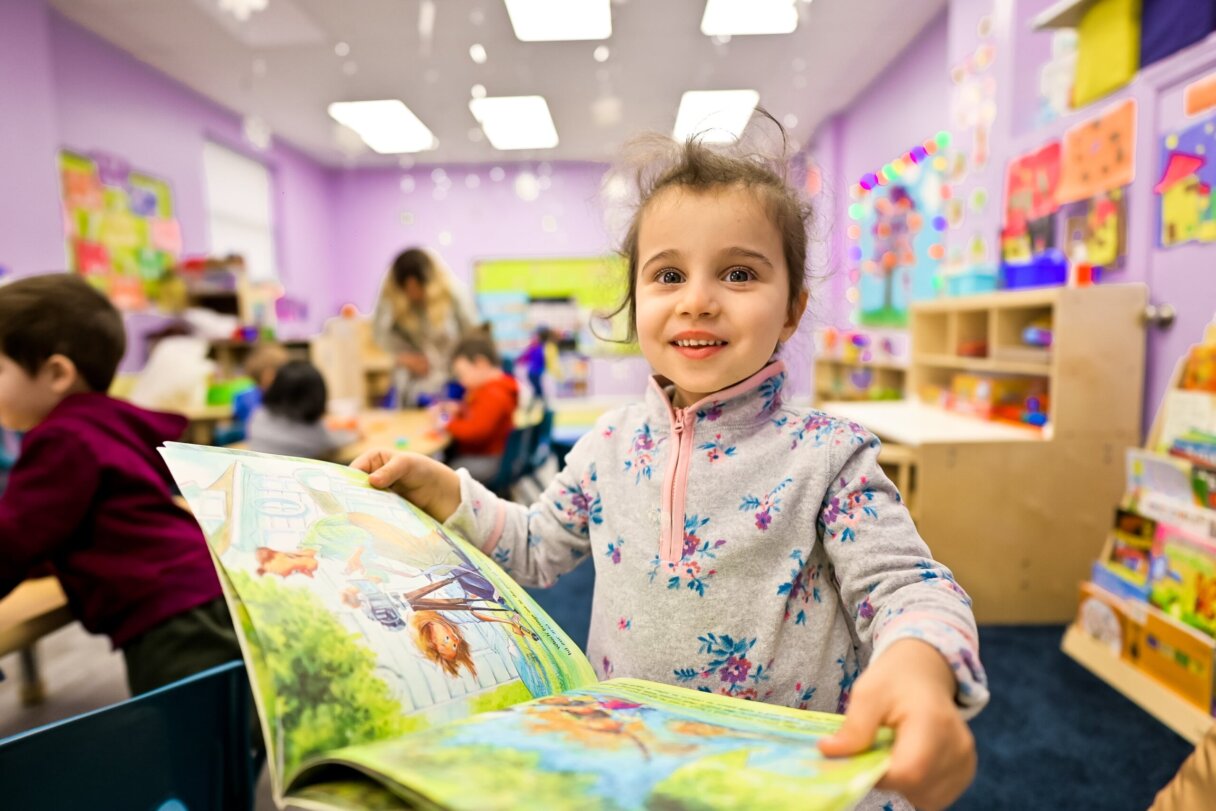
Reading into Spring: Books About Spring for Kids
Reading to children is a fundamental activity that yields numerous benefits, significantly impacting their cognitive, linguistic, and emotional development. It introduces them to vocabulary and language structures, enhancing their language skills and literacy. Through storytelling, children develop listening skills, concentration, and memory retention, which are crucial for academic success.
For preschool-aged children, engaging them with books that capture the essence of spring through vivid illustrations, simple narratives, and interactive elements can be both educational and entertaining. Here’s a selection of spring-themed books that include both fiction and non-fiction, as well as interactive options.
Recommendations for spring-themed books
Fiction and Non-Fiction Books about Spring
- “And Then It’s Spring” by Julie Fogliano and Erin E. Stead – This book beautifully illustrates the transition from winter to spring, capturing the anticipation and joy of seeing the first signs of the season.
- “Up in the Garden and Down in the Dirt” by Kate Messner and Christopher Silas Neal – A non-fiction exploration of the hidden world beneath the garden soil in spring, revealing the vibrant life that children don’t often see.
- “Spring is Here” by Will Hillenbrand – A delightful story about Mole waking up from hibernation to discover that spring has arrived, perfect for preschoolers.
- “The Tiny Seed” by Eric Carle – Through the journey of a tiny seed, this book introduces children to the life cycle of a flower, with Carle’s signature collage illustrations.
- “Fletcher and the Springtime Blossoms” by Julia Rawlinson and Tiphanie Beeke – This story follows Fletcher the fox as he misinterprets falling blossoms for snow, offering a gentle introduction to the seasons.
Interactive Books with Spring Themes
- “Plant the Tiny Seed” by Christie Matheson – An interactive picture book that invites children to pretend to plant and water seeds, wiggle their fingers to simulate rain, and clap to bring the sunshine, teaching them about plant growth.
- “Busy Spring: Nature Wakes Up” by Sean Taylor and Alex Morss, illustrated by Cinyee Chiu – This interactive book combines storytelling with educational elements, guiding children through the awakening of nature in spring.
- “Touch and Feel Spring” by Scholastic – This book provides a tactile experience, allowing children to feel different textures associated with spring, such as smooth eggs, bumpy seeds, and soft bunny fur.
- “My First Spring” by Sara Gillingham – An interactive board book with die-cut pages, colorful illustrations, and simple text that encourages children to explore the sights and sounds of spring.
- “Spring: A Pop-up Book” by David Carter – Offering a 3D experience, each page bursts with colorful pop-up artwork of spring scenes, engaging children’s senses and imagination.
Planning for Spring Break: Activities and Ideas
Planning for Spring Break involves creating a balance between fun, relaxation, and educational experiences. Here’s a guide to help families make the most of this time.
Spring Break Ideas with Kids
Day Trips and Local Attractions
Exploring local attractions can be a delightful way to spend Spring Break. Visiting nearby parks, zoos, museums, or botanical gardens offers children hands-on learning experiences and the chance to discover new interests. These outings don’t require extensive travel and can be a great way to understand more about your local community and its natural surroundings. Planning picnics, hikes, or bicycle rides can also enhance these day trips, making them more enjoyable and memorable.
Home-based Spring Break Camps
Creating a themed camp at home can be a unique and cost-effective way to spend Spring Break. You can organize a series of activities around themes like science, art, nature, or storytelling. These can include craft projects, DIY science experiments, nature scavenger hunts in the backyard, or even setting up a tent for a backyard camping experience. This approach allows for flexible scheduling, and activities can be tailored to your child’s interests, promoting learning and fun in a familiar environment.
Volunteer or Community Service Projects
Engaging in community service or volunteer projects during Spring Break can be a rewarding experience for families. It offers children a chance to learn about empathy, community responsibility, and the joy of helping others. Families can participate in local clean-up initiatives, help at a community garden, or support events at local libraries or community centers. These activities not only contribute to personal growth but also strengthen community bonds.
Cooking or Baking Classes
Taking a cooking or baking class together can be a delightful and educational activity for families. Many communities offer short courses or workshops that cater to children and adults, providing a fun way to learn new recipes and cooking techniques. This can also be an opportunity to explore spring-themed recipes, such as meals or treats made with seasonal produce, teaching children about nutrition and the importance of seasonal eating.
Arts and Crafts Festival
Attending a local arts and crafts festival or fair can be an exciting way to spend a day during Spring Break. Such events often feature workshops, live demonstrations, and interactive activities for children, allowing them to explore their creative sides. They can learn new crafts, appreciate local artists’ work, and even bring home their handmade souvenirs. These festivals not only support local artisans but also provide a platform for cultural education and creative expression.
Spring Break Travel Tips for Families
Planning and preparation are key to a successful family trip during Spring Break. Here are some tips to consider:
- Early Planning: Book accommodations and travel tickets well in advance to avoid last-minute price hikes and to secure the best options for your family.
- Itinerary Flexibility: While having a plan is important, allow for spontaneity and rest. Overpacking the schedule can lead to exhaustion, especially for kids.
- Packing Essentials: Bring along snacks, water, first-aid supplies, and entertainment for children, like books or games, to keep them engaged during travel.
- Safety Measures: Ensure all family members know what to do in case of an emergency, including meeting points and contact details.
- Budgeting: Consider all potential expenses, including meals, transportation, accommodations, and activities. Look for family discounts or packages that can save money.
- Local Research: Learn about your destination’s climate, culture, and attractions suitable for children. This can help in packing appropriately and planning activities that everyone will enjoy.
Whether you’re exploring local attractions, creating a fun-filled home camp, or traveling to a new destination, Spring Break can be a wonderful opportunity for family bonding and creating lasting memories with your kids!
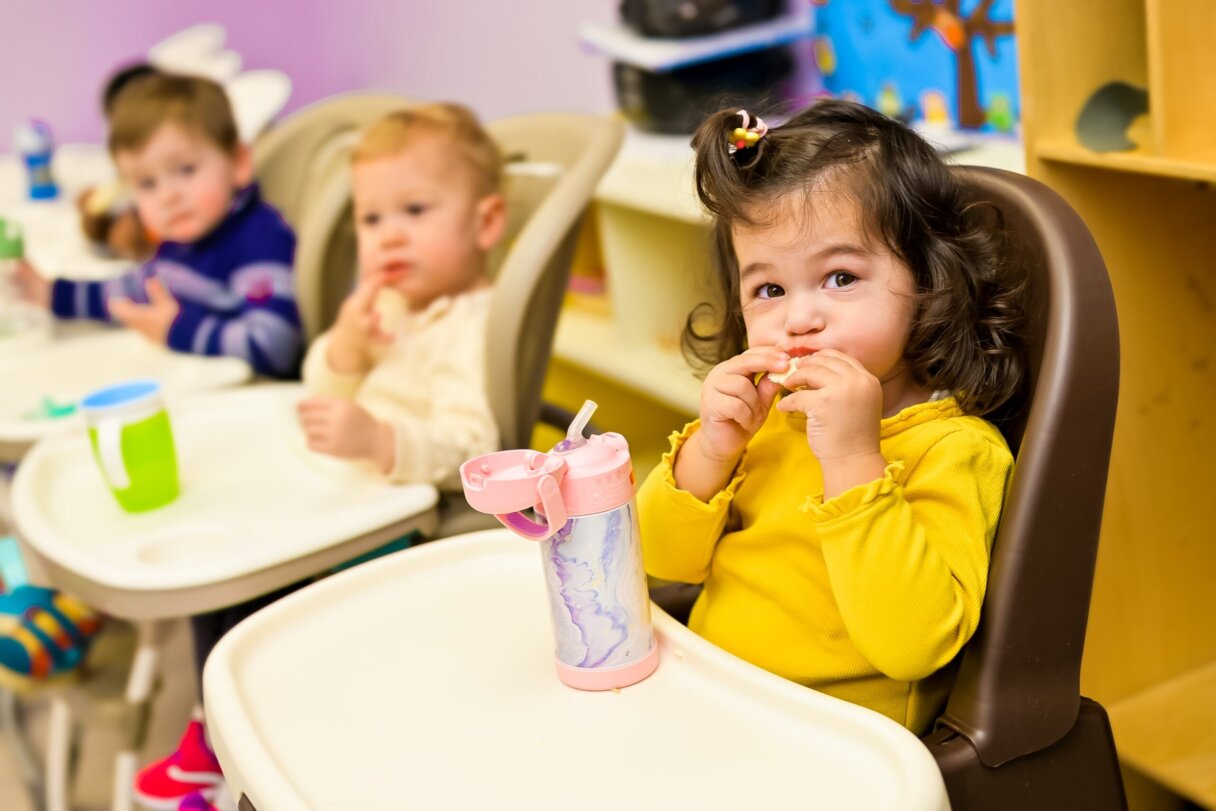
Sweet Treats and Learning Sheets: Spring Treats and Worksheets
Easy spring treat recipes to make with kids
- Flower Pot Pudding Cups: Create edible flower pots by layering chocolate pudding and crushed chocolate cookies in small cups. Top with flower-shaped gummies or fresh flowers on skewers for a delightful treat that looks like a potted plant.
- Spring Fruit Wands: Skewer a variety of colorful fruits like strawberries, grapes, and melon balls onto sticks. Add a star-shaped piece of watermelon or pineapple at the top to make magical fruit wands that are both healthy and fun to eat.
- Butterfly Snack Bags: Fill clear sandwich bags with an assortment of snacks like pretzels, grapes, or small crackers to resemble butterfly wings. Use a clothespin decorated with pipe cleaners as the body to create a butterfly shape, perfect for on-the-go snacking.
- Rice Krispie Nests: Shape Rice Krispie treats into small nests and fill them with candy eggs or jellybeans. These can be a sweet representation of bird nests and a fun way to welcome the spring season.
- Rainbow Fruit Parfaits: Layer different colored fruits in clear glasses to create rainbow parfaits. Top with yogurt or whipped cream and a sprinkle of granola for a tasty and visually appealing snack.
Educational Spring-Themed Worksheets
1. Math and Literacy Spring Sheets
- Math Worksheets: Include counting, addition, and subtraction exercises using spring-themed items like flowers, insects, and raindrops. For older children, incorporate basic multiplication or fractions with pictures of spring scenes or elements.
- Literacy Worksheets: Focus on letter recognition, phonics, and simple sentence formation using spring-related words. Activities can include matching words to pictures, filling in missing letters in spring words, and reading short passages about spring topics followed by comprehension questions.
2. Science and Nature Exploration Worksheets
- Science Worksheets: Cover topics like the life cycle of plants and animals, weather patterns, and basic environmental science concepts. Include activities like labeling parts of a flower, sequencing stages of a butterfly’s life cycle, or weather charting and predictions.
- Nature Exploration Sheets: Encourage outdoor learning with worksheets requiring observation and natural element collection. This can include scavenger hunts for different types of leaves, rocks, or insects, and drawing or writing about findings in nature journals.
Combining the enjoyment of making easy spring treats with the educational value of themed worksheets provides a balanced and engaging way for children to learn and enjoy the season.
References and Resources
For more ideas and resources on spring activities, here are some reputable websites and online platforms that offer a wide range of activities, worksheets, and educational materials:
- National Geographic Kids: A great source for science and nature exploration activities, offering educational resources about animals, plants, and ecosystems suitable for spring learning.
- PBS Kids: Provides a variety of spring-themed games, activities, and craft ideas that are both fun and educational, tailored for young learners.
- TinkerLab: A resource for creative and art-based spring activities, offering ideas that encourage innovation and creativity in children.
These websites provide a plethora of resources that can help parents and educators plan engaging, educational, and enjoyable spring activities for children of various ages.
Conclusion
The guide has explored various spring activities that entertain and educate children, embracing the essence of the season. From outdoor adventures like nature walks and gardening to educational STEM projects that delve into the wonders of plant and animal life, these activities offer rich learning experiences. Crafting projects inspired by spring themes foster creativity and fine motor skills, while themed books and interactive worksheets enhance literacy and cognitive development. Each activity is designed to promote physical, cognitive, and emotional growth, helping children appreciate the natural world and develop a love for learning.
As the days grow longer and nature bursts into life, spring presents a perfect opportunity to step outside and engage with the world in new and exciting ways. Let the spirit of spring invigorate your educational approach, fostering a sense of wonder and curiosity in children. Embrace the warmer weather, the blooming landscapes, and the chance for new growth and discovery, making this spring a memorable and joyous time for exploration and learning!
Enroll your child at Little Scholars Daycare today! Experience a world of fun, learning, and growth where every day is an adventure. Let’s nurture your little scholar’s curiosity and creativity together this spring. Contact us now to secure your spot and join the Little Scholars family!


